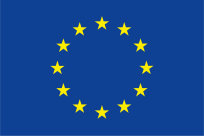Summary description
Recently, increased attention has been drawn to the greenhouse gas emissions of the Land use, Land use Change and Forestry (LULUCF) sector. In the Finnish LULUCF sector, the soil-originated emissions from the after-use of cutover peatland have become a more relevant question. This is due to the rapid increase in the number of former peat-harvesting sites, caused by the decline in the combustion of energy peat due to its high CO2 emissions. We conducted a nationally representative survey to study which after-use options of cutover peatlands are preferred by landowners. Based on the preferred after-use options, we estimated their impact on the national greenhouse gas emissions in the Finnish regions in 2035, and what factors influence the landowners’ choice of after-use options. We found that the four most popular after-use options for landowners were afforestation (71%), agriculture (24%), production of wind and solar power (22%) and rewetting (18%) when the respondent chose the three most attractive options. However, there were clear regional differences in the preferred after-use options, which might lead, if realized, to different soil-originated emissions at the regional level. The preferred after-use options could produce emissions of 0.35 million tonnes of carbon dioxide equivalent a year (Mt CO2 eq y−1) by 2035 in Finland. Most of these emissions (30.1%) would come from South Ostrobothnia in western Finland, mainly due to the indicated high interest in agricultural after-use. Most landowners prefer financially profitable after-use options, such as forestry, agriculture, as well as wind and solar energy production in cutover peatlands. However, environmentally oriented landowners favour many kinds of actions to support biodiversity, carbon sequestration, and water protection in cutover peatlands. It is crucial that economic productivity and the greenhouse gas sinks of cutover peatlands be considered simultaneously to meet the climate targets of the LULUCF sector in Finland.
External links

